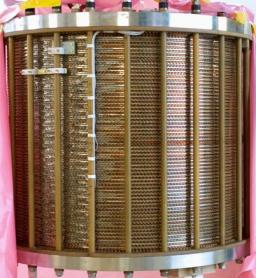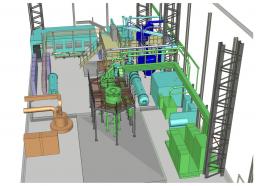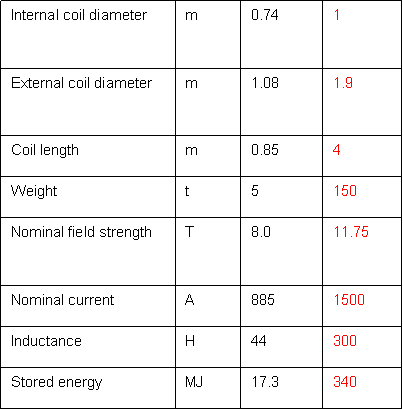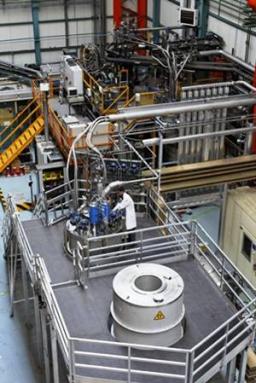The 11.75 tonne whole body Iseult magnet to be installed in the Neurospin centre in 2012 will push back the boundaries of cerebral imaging. A key step in the success of this Franco-German project is the development of the SEHT test station in which a nominal field strength of 8 teslas was successfully achieved in early October 2008
The magnetic resonance imaging technique (MRI) is a diagnostic and research tool used in the neurosciences. In 2012, the Neurospin centre will take delivery of an 11.75 teslas magnetic resonance imager (MRI) with a 90 cm diameter opening capable of scanning the patient’s entire body.
At the present time, no manufacturer has the capability to manufacture such a magnet. The IRFU Accelerators, Cryogenics and Magnetism department (SACM) and Systems Engineering department (SIS) have accepted the technological challenge of building the strongest whole body MRI magnet in the world. This technological leap forward in molecular imaging will be used in conjunction with new pharmaceutical contrast agents to advance knowledge of brain function. The imager will be used in both fundamental research in the cognitive sciences and in the diagnosis of neurodegenerative diseases with ten times the resolution previously achievable.
The Iseult project is part of a wider Franco-German collaboration involving the main manufacturers in the industry including Guerbet, Siemens Medical Solutions and Alstom MSA.
1. The high fields strength of 11.75 T, equivalent to 200 000 times the Earth’s magnetic field.
2. The large usable volume. Imaging the whole body, and especially the brain, requires a usable volume of several litres. For comparison, the system currently installed at the Neurospin centre generates a field strength of 17 T but in a volume that is 100 time smaller.
3. Temporal stability. The magnetic field strength must not vary by more than one 1000 millionth of a tesla over a period of ten minutes.
4. A field that is homogeneous to within 5.10-8 T over a volume equivalent to the patient’s brain.
5. Containment of the magnetic field within the experiment room using active shielding provided by a second winding.
The SEHT test station
A development programme including a number of prototypes and special test stations will be required in order to understand and overcome these problems.
An existing 8 T magnet previously used in the Grenoble High Magnetic Fields Laboratory (LCMI) has been housed in a new cryostat in order to carry out these tests. This prototype, known as the SEHT test station, has been designed using the same winding techniques and cooling system as will be used in Iseult. With a high field strength and a usable diameter of 587 mm, this magnet has been fitted with instrumentation for the detailed study of the key stages in the fundamental superconductivity phenomena. This instrumentation includes cold pressure sensors installed inside the winding cooling channels, temperature sensors, flux coils, and heater elements to bring the magnet back from a superconducting state to a resistive state.
Les premiers résultats sont là !
La mise en froid et la montée au champ nominal de Seht ont été entreprises avec succès le 1/10 /2008
La mise en froid a été effectuée en faisant d’abord circuler de l’azote liquide dans les écrans thermiques,puis de l’hélium gaz à très basse température dans un circuit dédié de pré-refroidissement et par un remplissage final en hélium liquide du réservoir contenant l’aimant. La montée au courant nominal de 887 A s’effectue en 74 mn environ à 0.2 A/s.
Un premier test de quench (transition brutale de l’état supraconducteur à l’état normal) a été provoqué à l’aide d’une chaufferette située à l’intérieur d’un canal en dissipant 25 W pendant 1.7 secondes.
Il a été alors enregistré une montée uniforme de pression de 140 mbars de tous les capteurs installés dans le bain ou les canaux. Corrélativement les températures sont montées de 1.8 K à une température proche mais toujours inférieure à 2.17 K, température de transition de l’hélium normal/hélium superfluide. La décharge complète de l’énergie stockée dans l’aimant suite à la détection de quench s’effectue en 1mn environ.
The first results are in!
The SEHT magnet was successfully cooled and brought up to its nominal field strength on 1st October 2008
Initial cooling was achieved by passing liquid nitrogen through the thermal screens. Helium gas at a very low temperature was then passed through a dedicated pre-cooling circuit before the entire magnet housing was filled with liquid helium. The current was increased to its nominal value of 887 A over a period of around 74 minutes at a rate of 0.2 A/s.
An initial quench test, involving a sudden transition from the superconducting state to the normal resistive state, was triggered by means of a heating element in one of the channels. The element dissipated 25 W for a period of 1.7 seconds.
All the sensors installed within the housing and the channels recorded a uniform pressure increase of 140 mbar. At the same time, the temperatures rose by 1.8 K to a temperature close to, but always below 2.17 K, the transition temperature between normal and superfluid helium. The stored energy in the magnet was fully discharged around one minute after the quench was detected.
»
• Accelerators, Cryogenics and Magnetism Division (DACM) • The Systems Engineering Division
• ISEULT







